This review is a follow up to BTR’s GTX 1060 launch review versus the RX 480 8GB and versus the GTX 980 4GB, and it is also the follow up to the overclocked-to-the-max GTX 1060 6GB Founders Edition evaluation where we hit 2100MHz. We originally tested the three competing cards each at stock with 26 games, and have only overclocked our GTX 1060 up until now.
At stock, the GTX 980 won decisively in performance over the stock reference RX 480, and marginally over the new stock GTX 1060. This time, we will overclock the GTX 980 and the RX 480 as far as they will go with a maxed out fan profile and with added voltage to see where they stand in relation to each other fully overclocked. We are using reference versions of all 3 cards.
The RX 480 OC vs. the GTX 980 OC & vs. the GTX 1060 FE
Issues with Overclocking the Diamond Reference RX 480 8GB
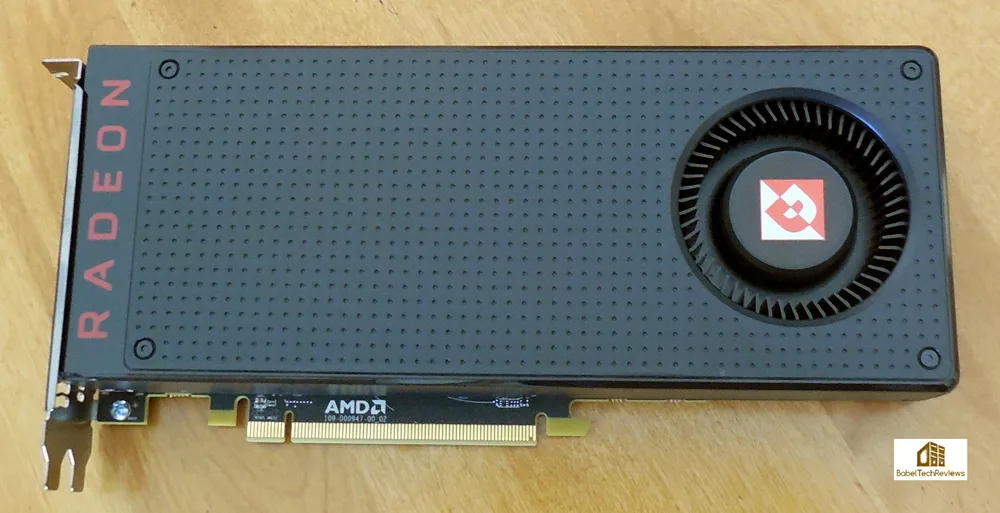 The $239 reference version of the RX 480 8GB is clocked up to it’s maximum boost speeds of 1266MHz from a base of 1120MHz at stock. We found that as long as the temperatures remain cool it will not throttle. However, at stock values, the RX 480 would not maintain its highest boost and our sample settled in at 1227MHz using the Crimson 16.6.2 launch drivers because we had to leave the Power Limit settings at stock (0%) to ensure the card’s stability.
The $239 reference version of the RX 480 8GB is clocked up to it’s maximum boost speeds of 1266MHz from a base of 1120MHz at stock. We found that as long as the temperatures remain cool it will not throttle. However, at stock values, the RX 480 would not maintain its highest boost and our sample settled in at 1227MHz using the Crimson 16.6.2 launch drivers because we had to leave the Power Limit settings at stock (0%) to ensure the card’s stability.
Overclocking the RX 480 was problematic for us in our original evaluation of the AMD reference RX 480 sample There appeared to be almost no headroom with the reference cooler since temperatures begin to rise steeply with just a 2% overclock. Temperatures jumped to 89C with a maximum of 92C. However, there was no severe throttling until we gave it a 5% overclock, and the automatic fan speed did not ramp up even though temperatures stayed at 93C, but performance suffered.
We next purchased a reference Diamond RX 480 from Newegg and in our follow-up with the hotfix Crimson 16.7.2 driver evaluation which addressed the out of spec PCIe voltage, we noted that we were able to set the Power Draw to +50% as we regularly do for all of our our video card evaluations. We got significantly higher performance than we did in our launch evaluation as we believe that setting the Temperature and Power Draw/Limit to their maximums eliminates the variability that throttling may otherwise cause for midrange and for higher end video cards.
This time we are going to cool our room to 72F and lock the voltage and fan speeds at their maximum to see how high of an overclock we can get. Here is a screenshot of our settings at 5%:
We were able to test most of our 26 games with an original stable overclock of 6.5% with all settings completely maxed out as above in a very cool room. We saw a completely stable boost at 1360MHz with the memory maxed out at 2250MHz. Unfortunately, the overclock did not last. Soon we saw instability in some of the benches and we were forced to lower the overclock to 6% even though conditions did not change.
Ultimately 20 of our 26 benches were run at either a 6% or 6.5% overclock until the RX 480 had a hard crash which not only forced us to recover from a restore point, our Monoprice display was evidently affected when we rebooted and it now has a vertical pink line running up the left side, and it will have to be replaced.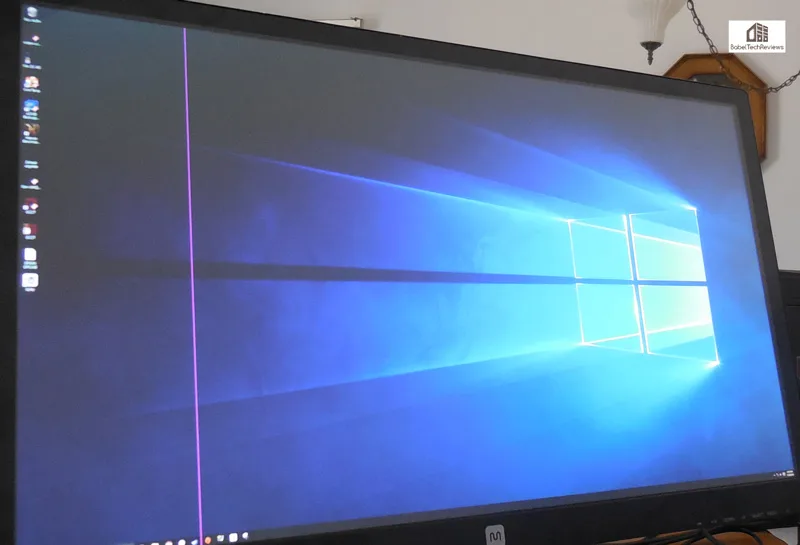
After this hard crash, we were forced to drop our overclock to 3.5% with the same settings – the RX 480 was not stable even at 4% in a cool room – and 6 of our remaining games were benchmarked at this lower overclock. They are identified on the summary chart on page 3. Evidently there are still issues with the reference RX 480’s overvoltage through the PCIe slot as we did not enable “compatibility” or safety mode as we wanted its full overclocking performance.
Overclocking the Founder’s Edition of the GTX 1060 6GB
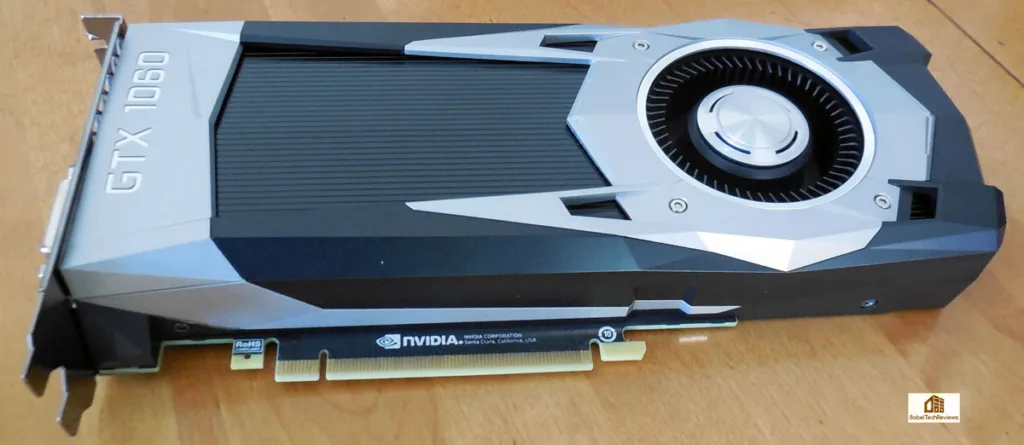 We devoted a separate evaluation to the GTX 1060 which you can see here. We achieved a final stable overclock of +225 MHz to the core which settled in at or above 2088MHz with GPU Boost 3.0 for the majority of our benching as we kept our room cool for all of our game benchmarks. Watching the PrecisionX OC in-game overlay during our benchmark runs we mostly observed 2100MHz! Our memory overclock remained at +700MHz for its clock of 4704MHz which greatly contributed to the increased performance.
We devoted a separate evaluation to the GTX 1060 which you can see here. We achieved a final stable overclock of +225 MHz to the core which settled in at or above 2088MHz with GPU Boost 3.0 for the majority of our benching as we kept our room cool for all of our game benchmarks. Watching the PrecisionX OC in-game overlay during our benchmark runs we mostly observed 2100MHz! Our memory overclock remained at +700MHz for its clock of 4704MHz which greatly contributed to the increased performance.

We never encountered any stability issues with our rather extreme GTX 1060 FE overclock, in contrast to the issues we encountered with the RX 480.
Overclocking the reference GTX 980 4GB
 We evaluated and overclocked the reference GTX 980 at it launch, and the review can be found here. As seen in the overclocking section, we finally settled on +200MHz offset to the core clocks and +500MHz offset on the memory clocks with complete stability. However, this time we had to back down our memory clocks to a +400MHz offset to achieve absolute stability. From the overclocking section of the article:
We evaluated and overclocked the reference GTX 980 at it launch, and the review can be found here. As seen in the overclocking section, we finally settled on +200MHz offset to the core clocks and +500MHz offset on the memory clocks with complete stability. However, this time we had to back down our memory clocks to a +400MHz offset to achieve absolute stability. From the overclocking section of the article:
Using maxed-out Heaven 3.0 looped in a window at 1920×1080, with all settings at stock values (Power and temperature targets are always maxed out), the Peak Boost observed was 1265MHz and it settled in at 1240MHz when temperatures reached 78C. Even with temperatures in our testing room a hot 80F, temperatures never reached over 82C under full load, and the fan was unnoticeable at 63%. Voltage ranged from 1.174V to 1.200V (average) to a high of 1.225V with clocks at stock values under gaming load.
Adding +200MHz to the core brought the peak boost up to 1452MHz and it stabilized at 1440MHz when the temperature exceeded 78C. The fan needed to ramp up to a still very quiet 68% to keep the core temps below 84C. Boosting the memory clocks +500MHz brought the temps up to 85C, and the fan needed to ramp to 72% where it became more audible.
We did not need to run our fan profile or voltage over stock settings to achieve this overclock as we could not get any higher by changing those settings on our GTX 980. It remained completely stable through all of our testing.
Testing Platform
Our testing platform is Windows 10 Home 64-bit, using an Intel Core i7-6700K at 4.00GHz which turbos to 4.4GHz for all cores as set in the ASRock Z7170 motherboard’s BIOS, and 16GB of G.SKILL DDR4 at 3200MHz. The settings and hardware are identical except for the drivers being tested.
We also feature our newest 2016 games, Mirror’s Edge Catalyst and DOOM, and we also include Ashes of the Singularity, Hitman, and Rise of the Tomb Raider using DX12. We have also added Total War Warhammer’s newly released DX12 built-in beta benchmark to our regular benching suite plus Futuremark’s just released DX12 benchmark, Time Spy. We will compare the performance of 26 modern games at 1920×1080, 2560×1440, and at 3840×2160 resolutions with maximum settings.
Before we look at our test bed and run benchmarks, let’s check out the test configuration.
Test Configuration
Test Configuration – Hardware
- Intel Core i7-6700K (reference 4.0GHz, HyperThreading and Turbo boost is on to 4.4GHz; DX11 CPU graphics).
- ASRock Z7170M OC Formula motherboard (Intel Z7170 chipset, latest BIOS, PCIe 3.0/3.1 specification, CrossFire/SLI 8x+8x)
- G.Skill Ripjaws V 16GB DDR4 (2x8GB, dual channel at 3200MHz)
- GTX 1060 6GB, Founders Edition, stock clocks and overclocked, supplied by Nvidia
- RX 480 8GB, Diamond reference version, at stock clocks and overclocked.
- GTX 980 4GB reference version, stock clocks and overclocked, supplied by Nvidia
- Two 2TB Toshiba 7200 rpm HDDs for each platform
- EVGA 1000G 1000W power supply unit (for both platforms)
- Cooler Master 2.0 Seidon, supplied by Cooler Master (Devil’s Canyon)
- Thermaltake Water2.0, supplied by Thermaltake (Skylake)
- Onboard Realtek Audio
- Genius SP-D150 speakers, supplied by Genius
- Thermaltake Overseer RX-I full tower case, supplied by Thermaltake (Skylake)
- Thermaltake Chaser II, full tower case, supplied by Thermaltake (Devil’s Canyon)
- ASUS 12X Blu-ray writer
- Monoprice Crystal Pro 4K
Test Configuration – Software
- Nvidia’s GeForce 368.64 GTX 1060 launch drivers were used for both Nvidia cards. High Quality, prefer maximum performance, single display.
- AMD Crimson Software 16.7.2 drivers were used for the benching the RX 480.
- VSync is off in the control panel.
- AA enabled as noted in games; all in-game settings are specified with 16xAF always applied
- All results show average frame rates including minimum frame rates shown in italics on the chart next to the averages in smaller font.
- Highest quality sound (stereo) used in all games.
- Windows 10 64-bit Home edition, all DX11 titles were run under DX11 render paths. Our four DX12 titles are run under the DX12 render path. Latest DirectX
- All games are patched to their latest versions at time of publication.
- Crimson Software’s WattMan was used for the RX 480.
- EVGA’s Precision XOC, reviewer’s version 6 used for Nvidia cards.
-
The 26 PC Game benchmark suite & 2 synthetic tests
Synthetic
- Firestrike – Basic & Extreme
- Time Spy DX12
- Crysis 3
- Metro: Last Light Redux (2014)
- GRID: Autosport
- Middle Earth: Shadows of Mordor
- Alien Isolation
- Dragon’s Age: Inquisition
- Dying Light
- Total War: Attila
- Grand Theft Auto V
- ProjectCARS
- the Witcher 3
- Batman: Arkham Origins
- Mad Max
- Fallout 4
- Star Wars Battlefront
- Assassin’s Creed Syndicate
- Just Cause 3
- Rainbow Six Siege
- DiRT Rally
- Far Cry Primal
- Tom Clancy’s The Division
- DOOM (*OpenGL)
- Mirror’s Edge Catalyst
DX12 Games
- Ashes of the Singularity
- Hitman
- Rise of the Tomb Raider
- Total War: Warhammer
Nvidia’s Control Panel settings:
Here are the settings that we always use in AMD’s Crimson Control Center for our default benching. The Power Efficiency Toggle is left off in our benching.
Let’s head to the performance charts to see how the stock and overclocked RX 480 compares with the overclocked GTX 980 at stock and aldo overclocked, as well as against the stock and overclocked GTX 1060 Founders Edition.
Performance summary charts & graphs
Below is the summary chart of 26 games and 2 synthetic tests. The highest settings are always chosen and it is usually DX11; DX12 is picked above DX11 where available, and the settings are ultra or maxed. Specific settings are listed on the performance charts. The benches were run at 1920×1080, 2560×1440, and at 3840×2160 (if it makes sense).
All results, except for FireStrike and Time Spy, show average framerates and higher is always better. Minimum frame rates are shown when they are available and they make sense, next to the averages but they are in italics and in a slightly smaller font. In-game settings are fully maxed out. Stock settings for each card are in the first column (in black) versus overclocked settings (in white) in the second column. The GTX 1060 results are in the first two columns, the RX 480 results are in the center two columns, and the GTX 980 results are given in the last two columns on the right.
The six games that we were forced to benchmark the RX 480 at a lower 3.5% overclock are shown in Silver/Gray numbers (Crysis 3/Dying Light/Mad Max/Just Cause 3/DOOM/Mirror’s Edge). Assassin’s Creed Syndicate is the game the RX 480 crashed on at 6%, and the results are split (2560×1440 resolution was benched at 3.5%; 1920×1080 was benched at 6% overclock).
Generally the overclocked GTX 980 sits just above the overclocked GTX 1060, which in turn sits above the overclocked RX 480, just as the reference clocked cards do. In fact, the superb overclocking abilities of the GTX 1060 allow it to win in more games overclocked over the overclocked RX 480 than it did at stock. Both of our samples of the reference RX 480 have proved to be poor overclockers, besides being unstable if pushed even slightly over their threshold.
Hitman at 1920×1080 is the only obvious outlier. At stock and also overclocked, the RX 480 beats the GTX 1080 at 2560×1440 but it does not scale with its overclock at 1920×1080.
Let’s head to our conclusion.
Conclusion
This has been quite an interesting exploration for us in evaluating the overclocked and stock RX 480 reference version versus the stock and overclocked reference GTX 980, and versus the stock and overclocked GTX 1060 Founders Edition. The GTX 1060 did very well performance-wise but still slotted below the reference the GTX 980.
We simply cannot recommend the RX 480 8GB reference version at any overclocked speeds as it appears that AMD has already pushed Polaris right to the edge of stability. And their driver “fix” apparently still apparently has issues unless you allow a compatibility mode to throttle its overclocked performance. It unfortunate as the RX 480 appears to scale well with an overclock. Worst of all, if you turn the fan profile to its maximum, it sounds like an annoying hairdryer on its highest settings.
In contrast, both the GTX 980 and the GTX 1060 are both very good overclockers and they remained stable. Turning the fan to their highest settings do make more noise, but it is more like a “whoosh” of air which is far less intrusive than the whine of the RX 480 at its maximum fan speeds.
We look forward to hopefully getting our own Pascal Titan X and to comparing its progress over the Maxwell Titan X next week. Stay tuned.
Next week, we will have a new evaluation with a brand new card that we are benching right now. The results may surprise you.
Happy Gaming!
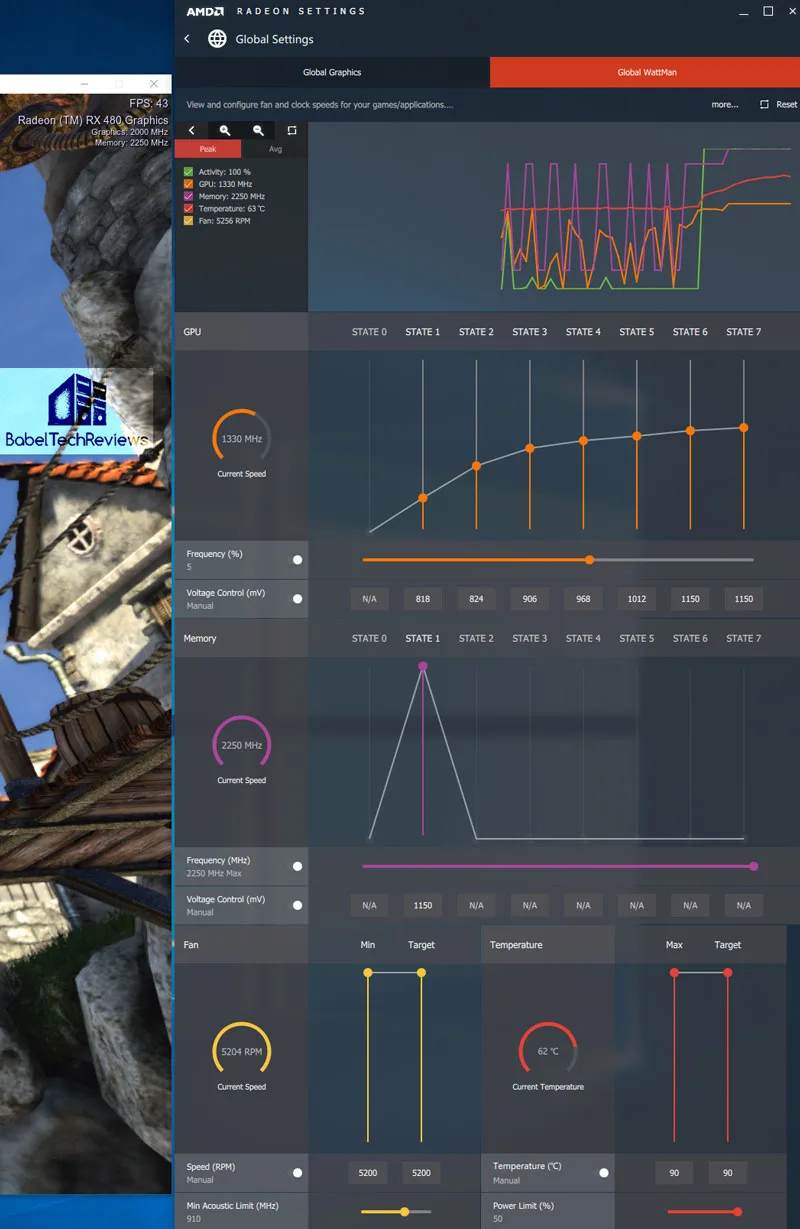


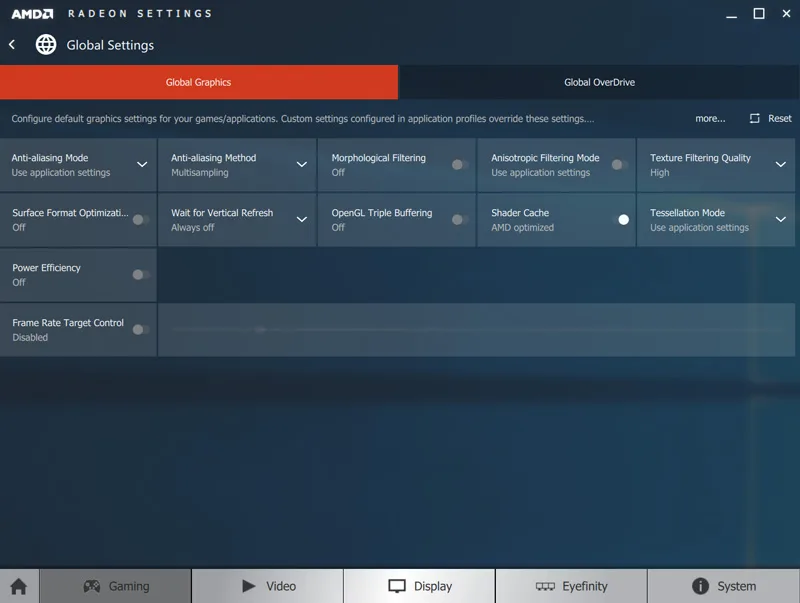
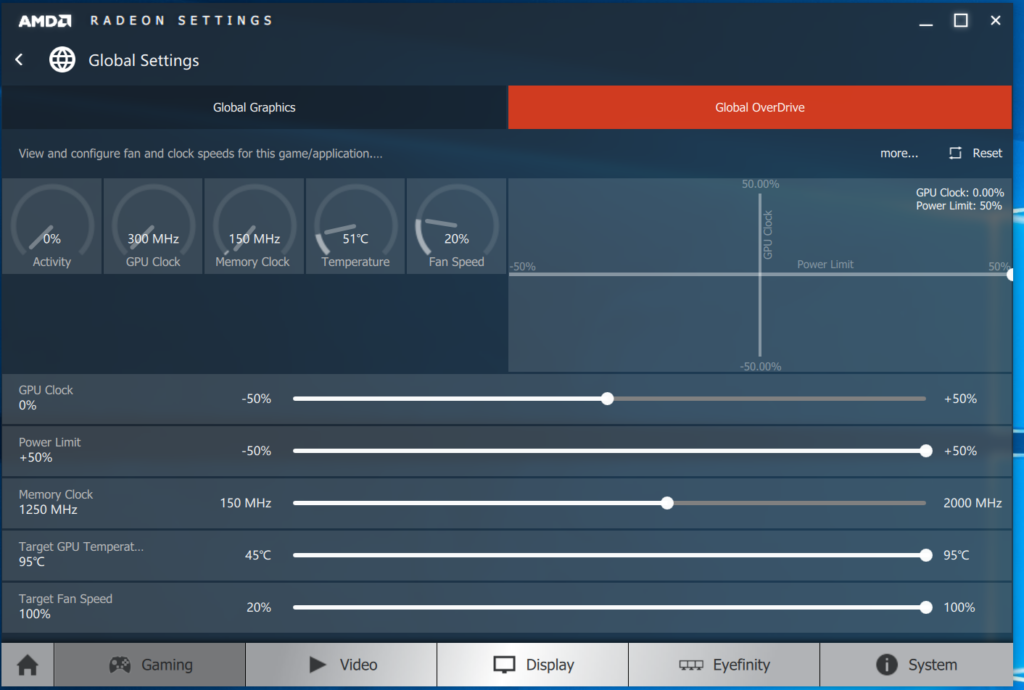

Comments are closed.